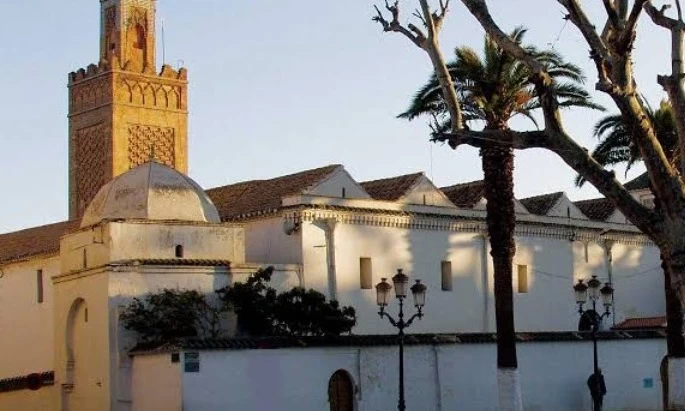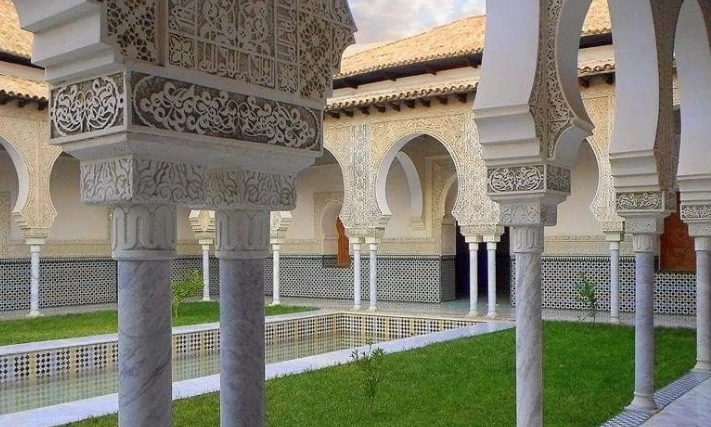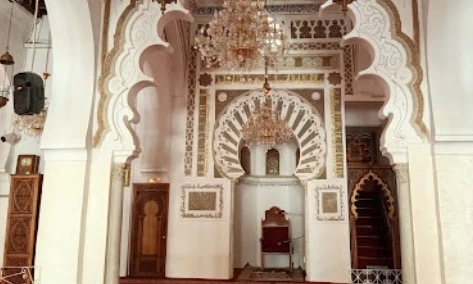The Great Mosque of Tlemcen
The Great Mosque of Tlemcen is located in the city of Tlemcen, Algeria. It was built in the year 1136 by Youssef bin Tashfin, the first caliph of the Almoravid state. As for the minaret, the one who built it in 1236 is Yaghmarasen bin Zayan. The mosque was built of stones, bricks and plaster. But the architectural decorations include marble, carved and perforated plaster, ceramics and wood. This ancient mosque is considered one of the three mosques built by the Almoravids in Algeria, and this mosque is organized in the manner of other Almoravid mosques. In shape, surrounded by arcades on the two small sides, and representing the first Moorish model of religious architecture, the architecture of this mosque is distinguished by the use of arches in the form of a horseshoe that are crossed and broken and the many others in the special decorated lobes next to the mihrab.
This mosque is a shining example of the magnificence of design and splendor of decoration, as it is one of the most important and beautiful remaining monuments from past ages, which visitors and tourists prefer to visit during tourism in Algeria. 1082 AD, then his son Ali bin Yusuf bin Tashfin succeeded him, who added to the mosque many decorations that made it unique of its kind, as it is a very beautiful mosque, in which there is a special area for women.
This mosque is considered one of the most important and beautiful living evidence of the Almoravid architecture, and what distinguishes it in Tlemcen is its construction without the minaret, and it remained that way for a whole century, and the minaret was not erected until after the Zayanis entered the city of Tlemcen, so this mosque was built at the beginning in the architectural style Very simple and without any decorative costs, in line with the nature of the cultural personality that the Almoravids enjoyed before entering Andalusia and discovering its advanced architectural arts compared to the reality of their Bedouin situation in the depth of the desert and their tendencies to asceticism in life and their preoccupation with preaching and jihad, but after entering Andalusia, after the Battle of Zalaqa In the year 108 A.D. that changed completely, and at a time when Andalusia became administratively and politically subject to the Almoravids, they returned in exchange for that as captives of Andalusian architecture, and at the end of the reign of Prince Ali bin Yusuf bin Tashfin, the mosque was expanded and new tiles and slabs were added to it and the cladding of the facade The apse, the mihrab, with stucco decoration, which is considered in our present time as a living example of the finest creations of Moroccan-Andalusian art in the glory of its progress and prosperity. Indeed, this ancient mosque is Well worth a visit.


